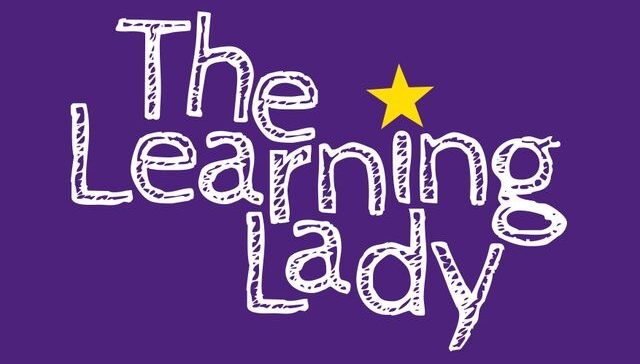One of the most common ways of spelling the ER sound or phoneme, is with UR. This is usually found in the middle of words. This is the first UR sound or phoneme that children learn in Reception Class. You’ll recognise this UR sound in words like burn, turn, hurt, church or surf.

The next most obvious spelling alternative to teach is an ER making the ER sound or phoneme. This is mostly found at the end of words. You’ll recognise this in words like power, shower, tower, or longer words like flower, longer, or toaster.
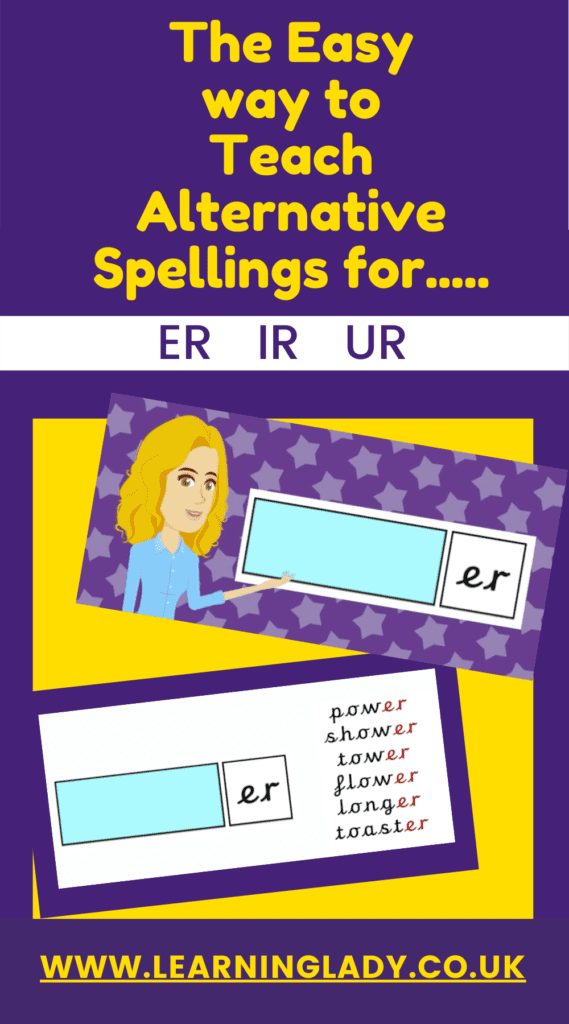
Exceptions to be aware of, which disprove these rules, include words like fur and perfume. It’s best to avoid these at this stage because children need to have a basic understanding of general rules, before we introduce exceptions.
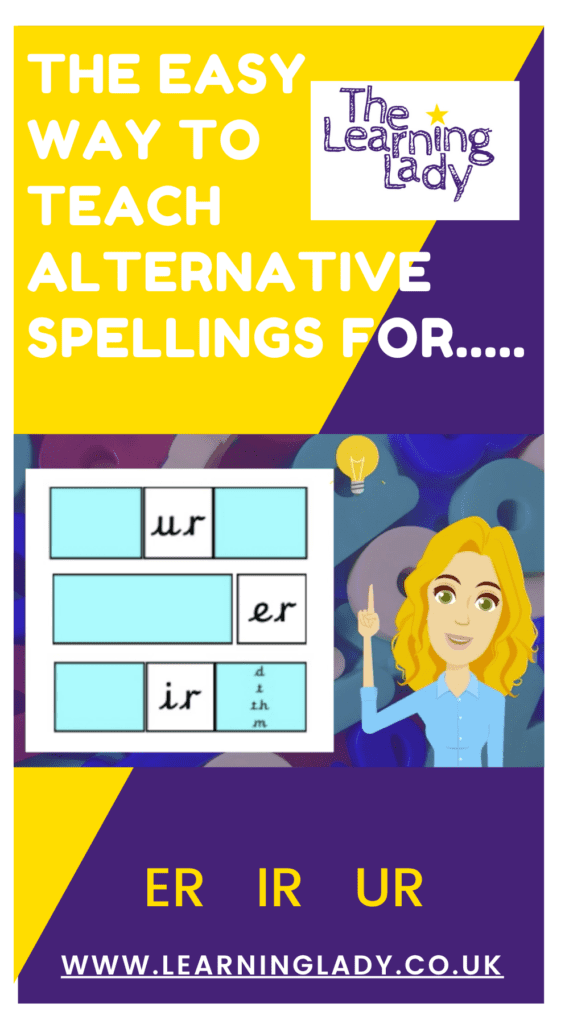
The final ER alternative spelling uses an IR to make the ER sound. This is a less common spelling for the sound or phoneme ER, and it is usually found in the middle of words.
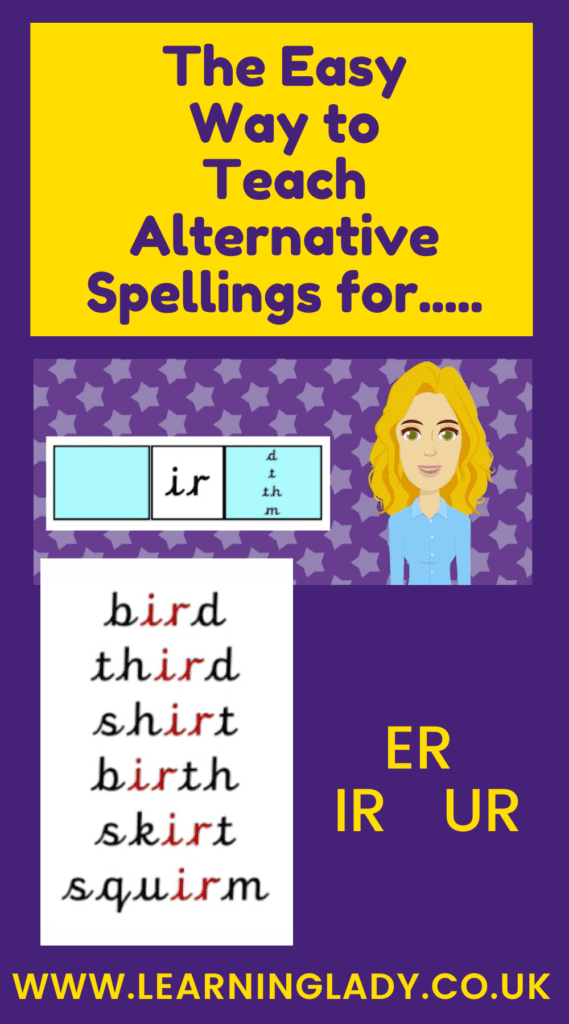
A good way to remember when an IR should be used (rather than a UR) is that, if you hear an m, d, t, or th after the ER sound, the best choice for spelling is to use the IR, rather than the UR.
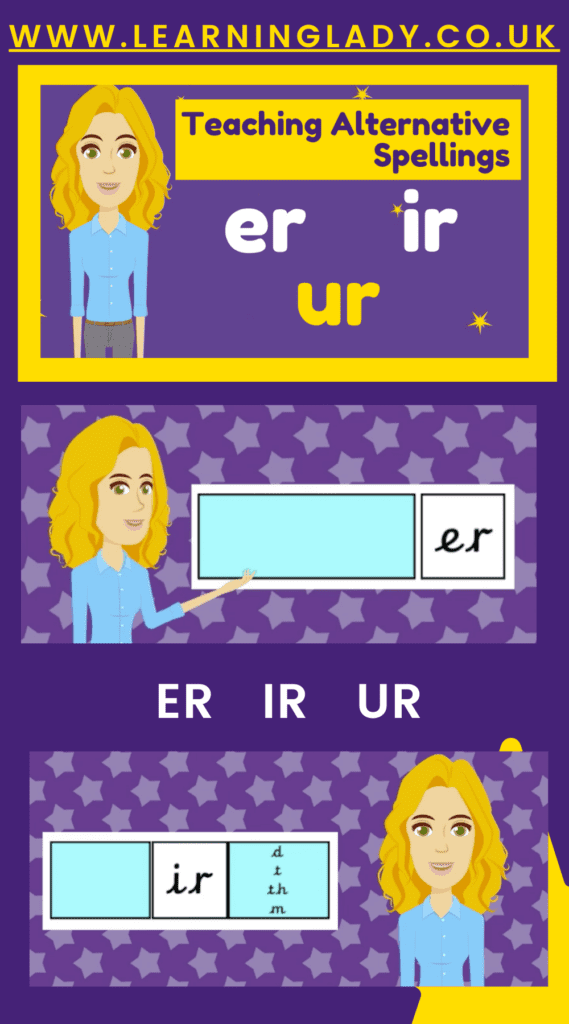
Some helpful examples include words like; bird, third, shirt, or even longer words like skirt, squirm, or squirt.
Some exceptions to avoid at this stage include words like fur and circus, because these disprove the rule.
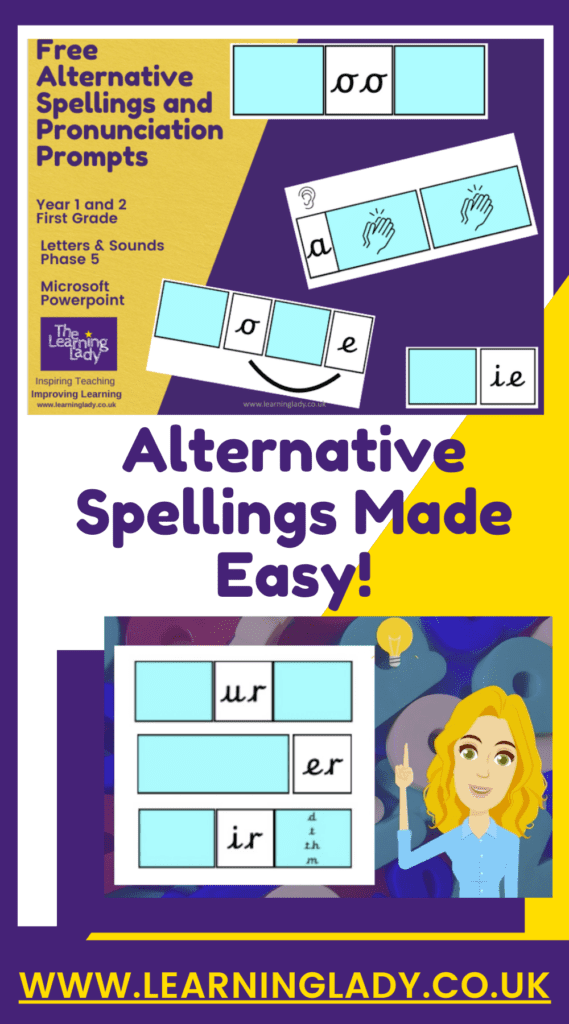
Learning Lady Top Tip
When you’re teaching these Phase 5 Phonics spelling rules and alternatives, always pick the words to prove the rule before you start. Otherwise, if you ask the children for examples, they’ll come up with all sorts of ideas and exceptions,. Explaining the rules then becomes much, much harder!
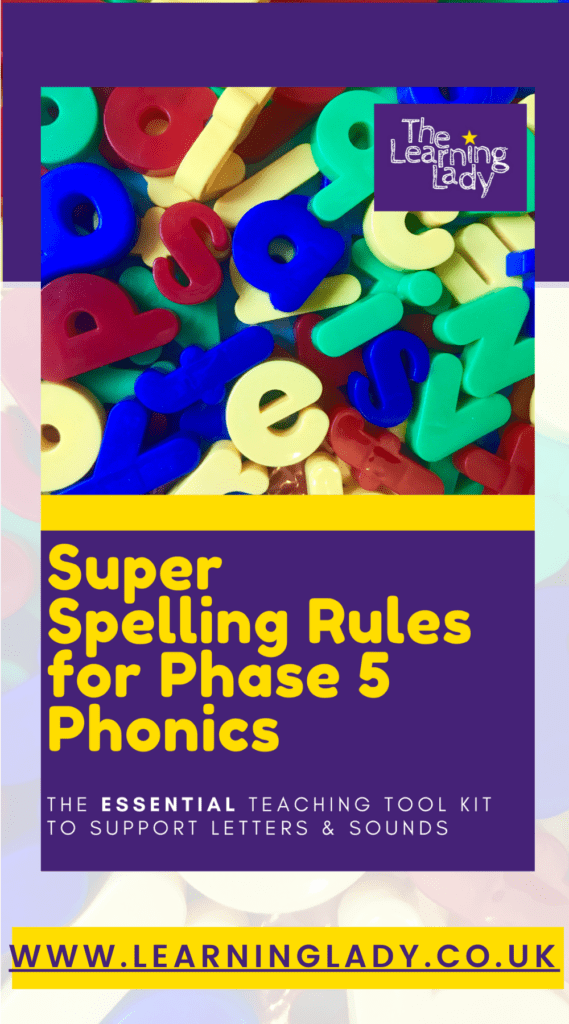
For all of the spelling rules and alternative pronunciations of sounds you’ll need to teach Letters and Sounds Phase 5 SPECTACULARLY WELL, Download my FREE PDF Super Spelling Rules guide now.It includes:
Easy, plain English, explanations of all of the rules you’ll need
Lists of words which prove each rule
Exceptions to avoid
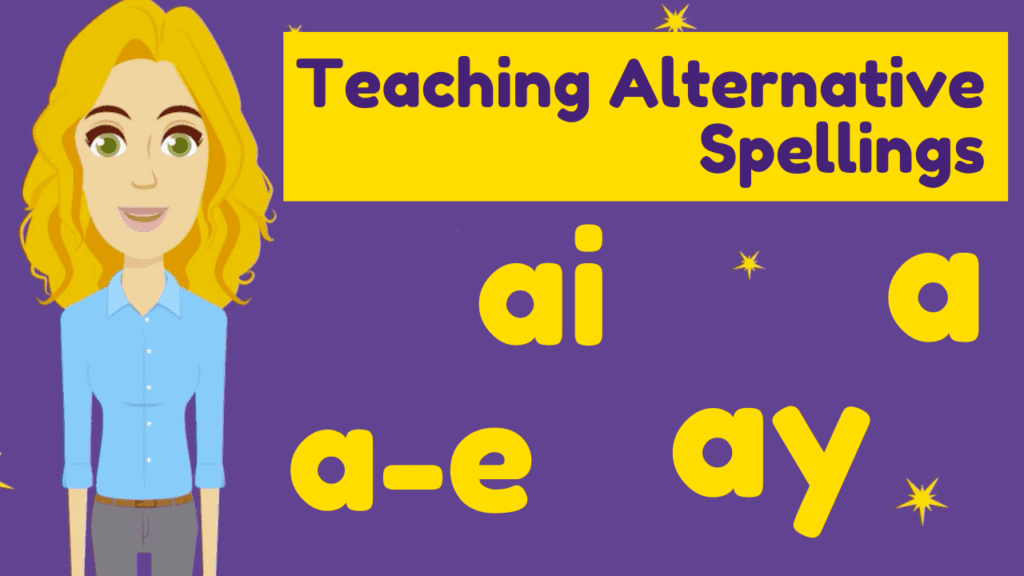
Don’t forget there are more spelling rules and alternative pronunciations to master when you’re explaining Phase 5 Phonics.
Check out these rules to teach the most common spelling choices in Phase 5 SPECTACULARLY WELL!
Alternative spellings and rules to teach the AI sound
Spelling alternatives for the EA phonics sound Phase 5
Alternative spellings for IGH phonics in Phase 5
Alternative spellings for IR words in phonics Phase 5
Alternative spellings for OE words in phonics Phase 5
Alternative spellings for the OR phonics sound in Phase 5
